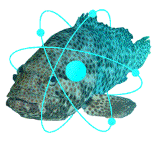Speaker
Description
This talk reports on the HCAL-J hadron calorimeter, that we assemble at Jefferson Laboratory in Newport News, VA-US.
The main interest of JLAB [1] physics is the study of fundamental interactions and constituents of hadronic matter by a longitudinally polarized electron beam; in particular, the electromagnetic Form Factors of nucleons are studied using a continuous electron beam as a probe, accelerated up to 12GeV by CEBAF (Continuous Electron Beam Accelerator Facility). The upgrade to higher energies allows carrying out measurements at high values of transferred momentum and, therefore,
a more in-depth study of the internal structure of the nucleon.
To this purpose, we build the SBS (Super Big Bite Spectrometer) [2], which consists of a series of elements including a dipole magnet to curve the track of the recoil particles, to be able to determine their momentum, and a series of GEM (Gas Electron Multiplier) trackers, which have the task of measuring the direction of the recoils. Moreover two analyzers for the measurement of the
polarization components and a hadron calorimeter called HCAL-J [3] for the measurement of particle energy, are used in order to apply the so called “recoil polarization method” which consists of the measurement of the longitudinal and transverse polarization of the scattered recoil [4].
The study, through SBS, of the electromagnetic form factors of nucleons allows for deriving the ratio between these two components, which results to be proportional to the ratio between the electric and magnetic Form Factors of the studied nucleon. [5]
We will use the HCAL-J hadron calorimeter in several experiments for the study of the internal structure of nucleons, i.e. for the study of proton and neutron Form Factors.
HCAL-J is a sampling calorimeter useful for measuring the energy of a particle, after that it is absorbed; the peculiarity of this detector is that the output signal is proportional to particle energy.
HCAL-J will have a modular structure in which each module, with a front surface of 15x15cm2 and a length of 1m, consists of alternating layers of iron in which the hadron shower forms, and plastic scintillators in which its energy is sampled. The active area consists of 288 modules that include a matrix with 24 modules in length and 12 in width; the thickness of the iron plates is 1.5cm, while the sparkling plate one is 1cm. There are optical fibers between each module, connected to a photomultiplier, in order to look at the light from the scintillating material and convert it into an electric signal, related to the energy of the incident particle. The requirements for any SBS experiment are: match acceptance of SBS magnet/polarimeter, high threshold in energy, while high
trigger efficiency is kept, linear energy response, angular resolution about 5mrad and a time resolution TOF < 1.0ns.
The energy resolution of HCAL-J, estimated through preliminary simulations by Geant4 [6], was found to be 42.3% for a hadron momentum of 2.7GeV/c, gradually improving with increasing the
hadron momentum.
